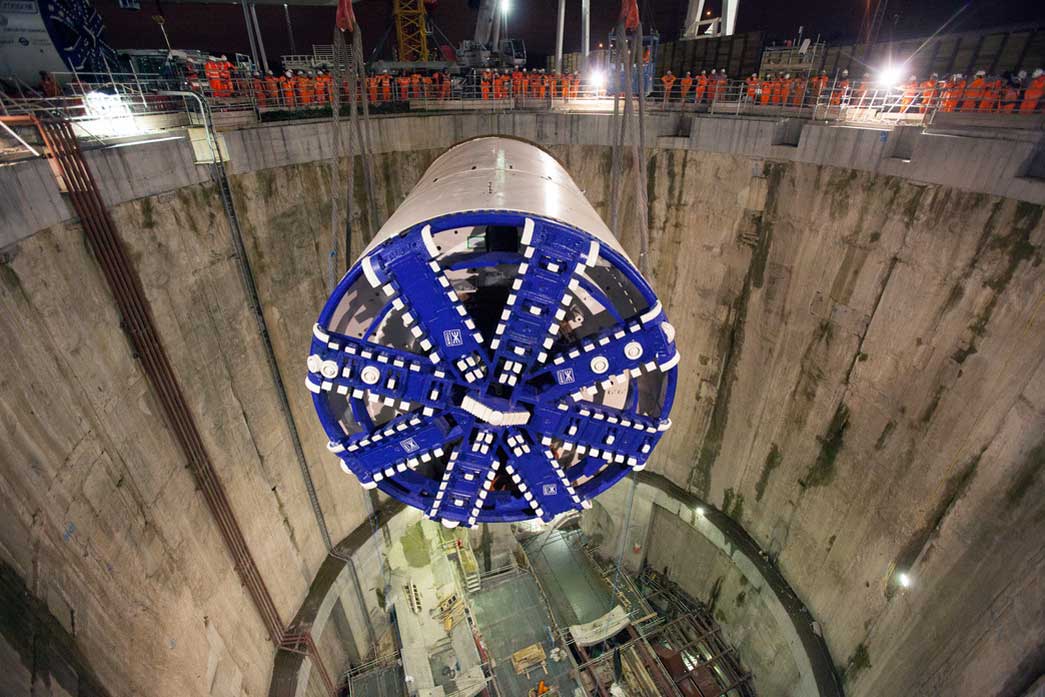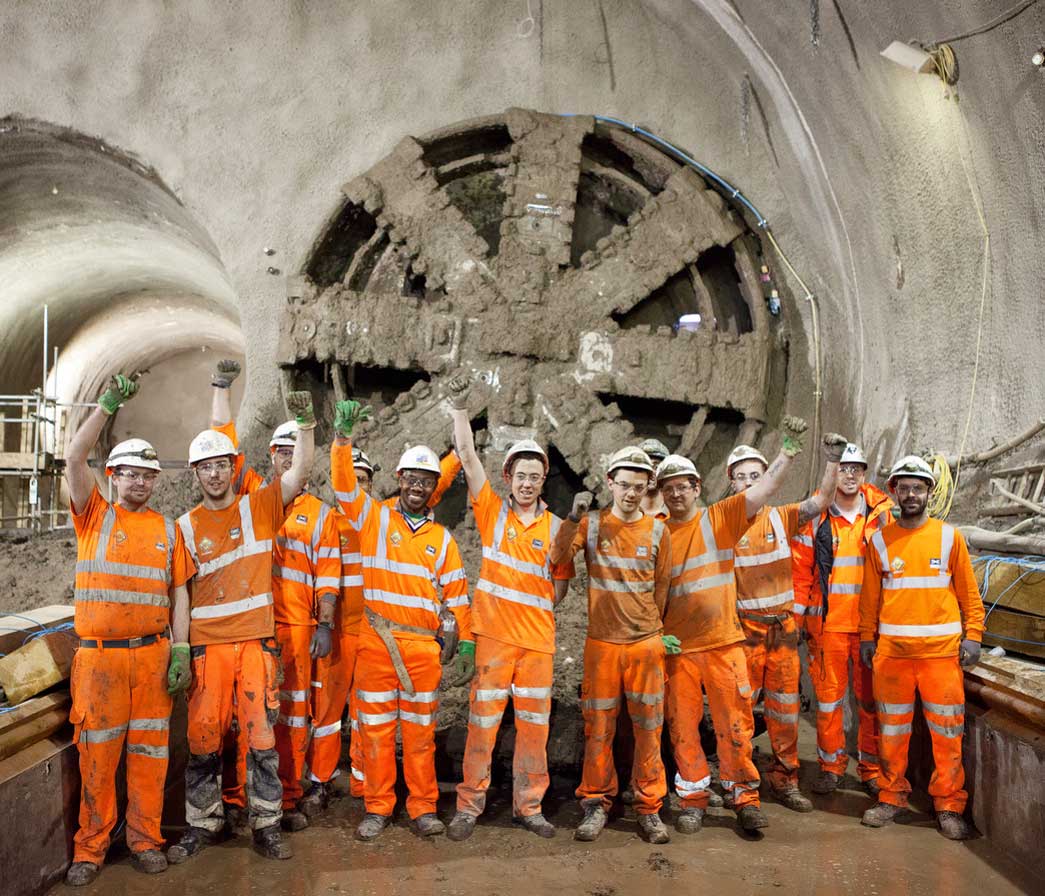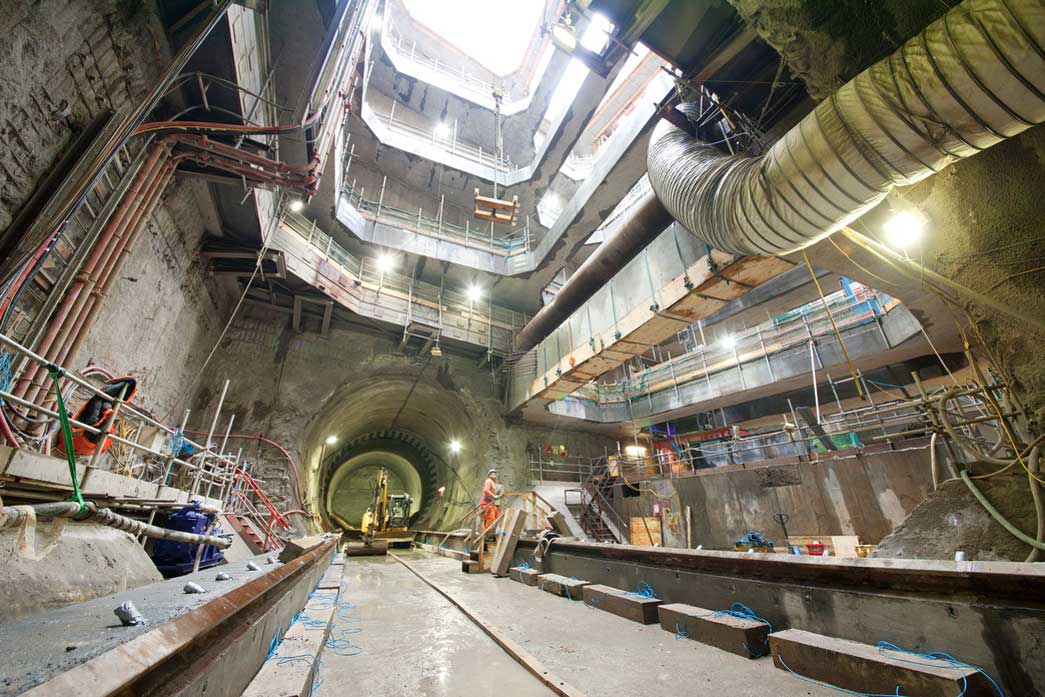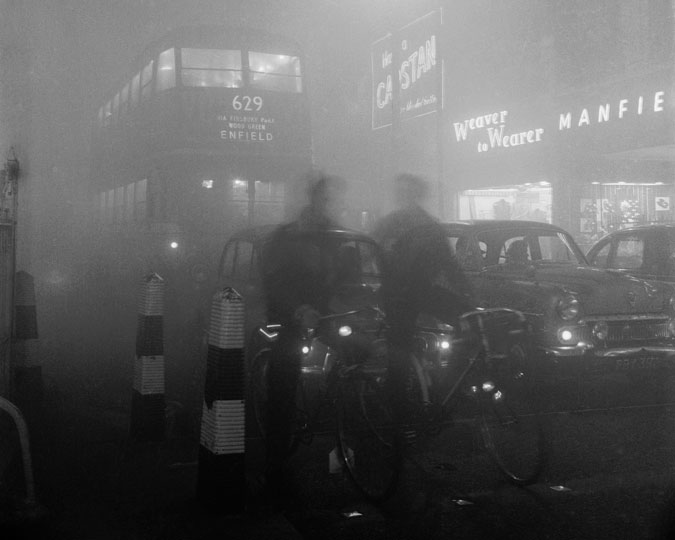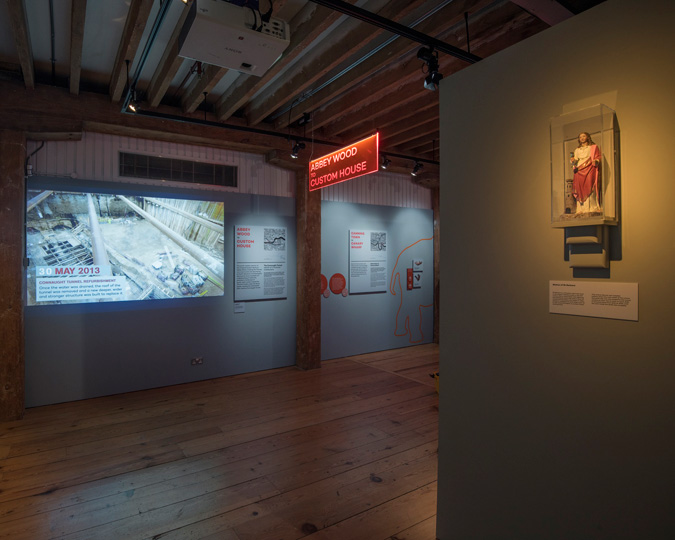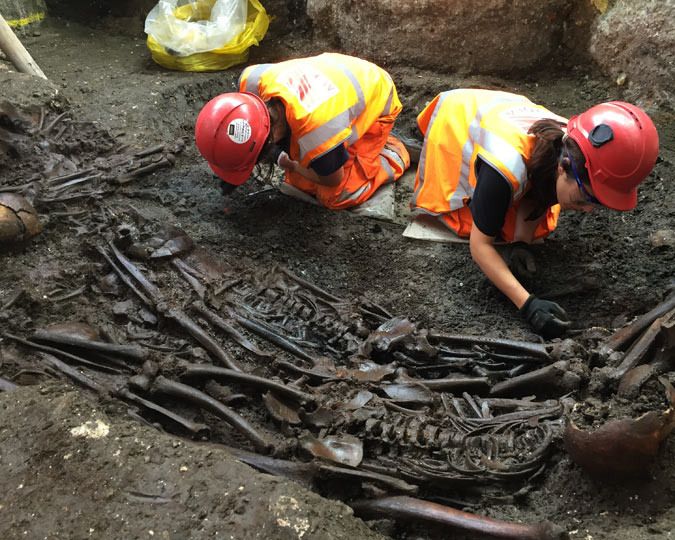Building the new Elizabeth Line through London presented many challenges and required innovative engineering techniques. Here, we explain how this amazing feat of engineering was achieved.
In May 2022, the new Elizabeth Line will open to travellers, the culmination of the Crossrail project. Building a new train line through London presented many challenges and required innovative engineering techniques. The route is 118km long, with 42km of tunnels running right through the centre of London and under some of its busiest streets. In order to avoid building foundations, existing Underground lines, water pipes and electrical cabling most of the train tunnels were dug between 30 and 40 metres below ground.
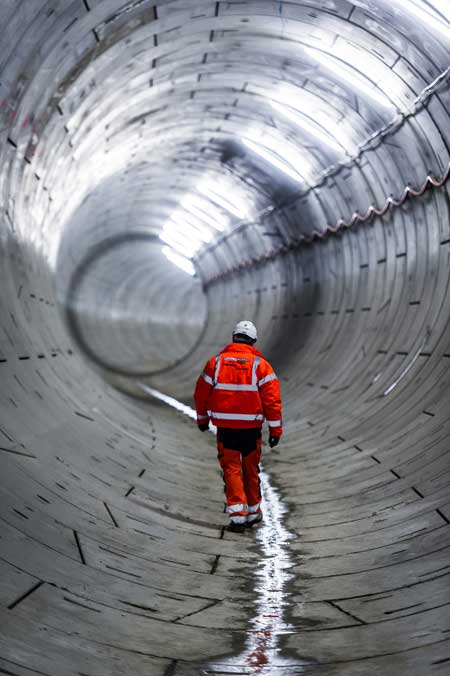
Construction worker inspects completed tunnel beneath the Thames
Copyright Crossrail.
The tunnels for the Elizabeth Line were built in five different sections, by eight large drills called Tunnel Boring Machines (TBMs). All the TBMs have women’s names. The main train tunnels for the Elizabeth Line, or running tunnels, were created using the Tunnel Boring Machines and concrete segmented rings.
Each machine bored through the strata, extracted the soil, and built the tunnel, inserting the concrete rings. Each ring was made from seven curved concrete segments and a keystone. Over 250,000 segments were used to create the tunnels.
The TBMs were used in pairs to create two tunnels, one for the eastbound trains and one for the westbound. These train tunnels are 6.2m in diameter. The tunnels running from the Limmo peninsula to Farringdon was the longest section of tunnel to be bored. It is 8.3km long and took three years to build, one of the largest engineering projects in Europe.
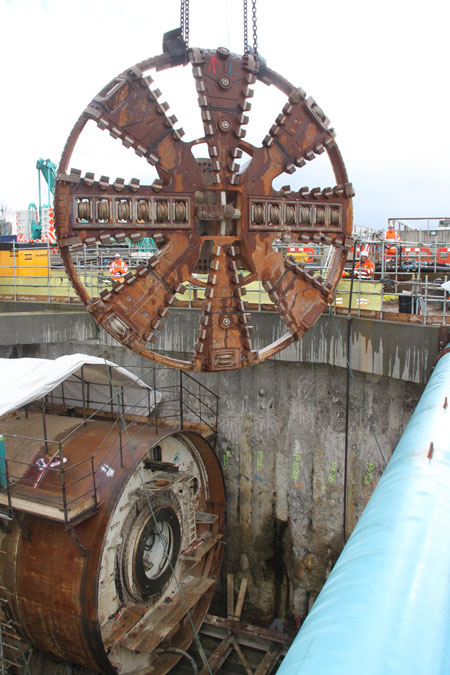
TBM Sophia's cutterhead is removed
Following completion of her tunnel drive. Copyright Crossrail.
On a project like this there is absolutely no margin for error. Planning the tunnelling was a precise science, with extensive surveying and planning taking place in advance of the actual tunnelling work. The importance of this preparation work can be seen, for example at Tottenham Court Road, where, during the tunnelling from Paddington to Farringdon, TBM Ada came within 90cm of live Northern line platforms and within 60cm of passenger escalators, but passed through safely.
The sprayed concrete technique involves spraying a quick setting form of concrete onto freshly excavated ground. This method was used to create station platform areas, passenger walkways and the large caverns for the train crossover points.
The breakthroughs were when the TBM’s broke through from one section of tunnel to the next, thereby unifying the line. The final breakthrough on the east-west tunnels, completing the route, finally happened at 3am on 23 May 2015 when TBM Victoria broke through into the reception chamber at Farringdon’s eastern ticket hall, joining together 42 kilometres of tunnels under London. In the process, Crossrail had uncovered thousands of archaeological objects from throughout London's history, many of which you can see on display in the Tunnel exhibition.
This research was undertaken as part of 'The Tunnel: the Archaeology of Crossrail' exhibition at the Museum of Docklands, which closed in September 2017. The display covered thousands of years of London's history uncovered during the construction of the new Elizabeth tube line.








